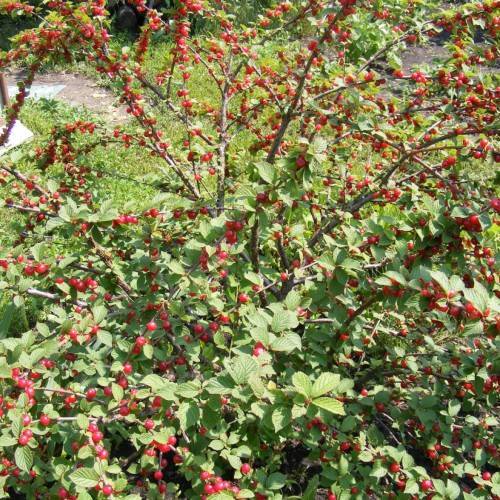
downy cherry
Prunus tomentosa
Cycle:
Perennial
Watering:
Average
Hardiness Zone:
2 - 7
Flowers:
Flowers In Spring
Sun:
Full sun,part shade
Fruits:
Fruits Ready In
Edible:
Yes
Leaf:
Yes
Growth Rate:
Low
Maintenance:
Low
Poisonous To Pets:
Yes
Salt Tolerant:
Yes
Thorny:
Yes
Invasive:
Yes
Care Level:
Medium
watering
Downy cherry (Prunus tomentosa) is a drought-tolerant species of plant that requires minimal watering needs. It should be watered about once every 2 weeks, depending on the amount of rainfall and temperatures. During the summer months, this plant will likely require more watering than in the fall and winter months. When watering your downy cherry, it is important to use a slow, steady stream of water and water deeply so that it reaches the roots. While it is best to water the plant early in the morning so that it has time to dry, it is also acceptable to water in the evening. Be sure not to oversoak the plant, as this can lead to root rot and other issues. For outdoor plants, expect to water more in the summer months when temperatures and sunlight are higher. You may also need to adjust the amount of water depending on the soil type and local climate. If your soil is sandy or has low nutrient levels, watering your downy cherry more frequently may be necessary. Lastly, it is recommended to mulch your downy cherry so that the soil does not dry out quickly. The mulch will help retain moisture better, enabling you to water less often, while at the same time helping to reduce weeds.
sunlight
Downy cherry (Prunus tomentosa) plants grow best in full sunlight. During the warmer months, they should receive at least 6 hours of direct sunlight each day. During the cooler months, they can tolerate a few hours of sun each day but may not flower and fruit as well as they would with more light. If possible, it is best to give downy cherry plants the maximum amount of sunlight when the plant is actively growing.
pruning
Downy cherry (Prunus tomentosa) should be pruned in late winter or early spring while the plant is still in its dormant state and before any new growth occurs. Light pruning of branches that are overly dense or crossing can be done at any time during the growing season. Generally no more than 1 third of the overall growth of the plant should be removed. Heavy pruning is not recommended, as it can cause the plant to become leggy and lack in fruit production. Pruning should be done with sharp, clean pruners to avoid infecting the shrub with disease.
